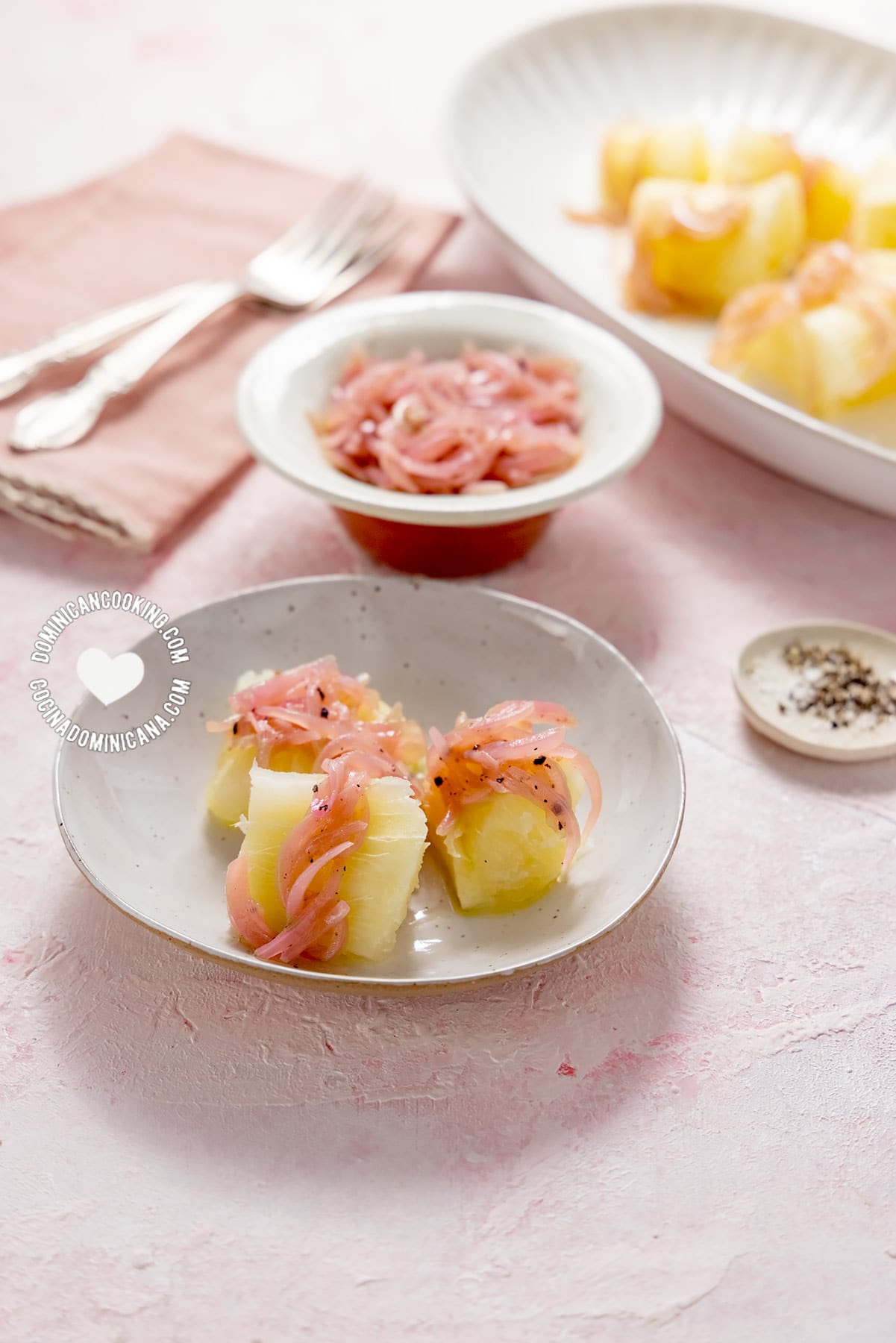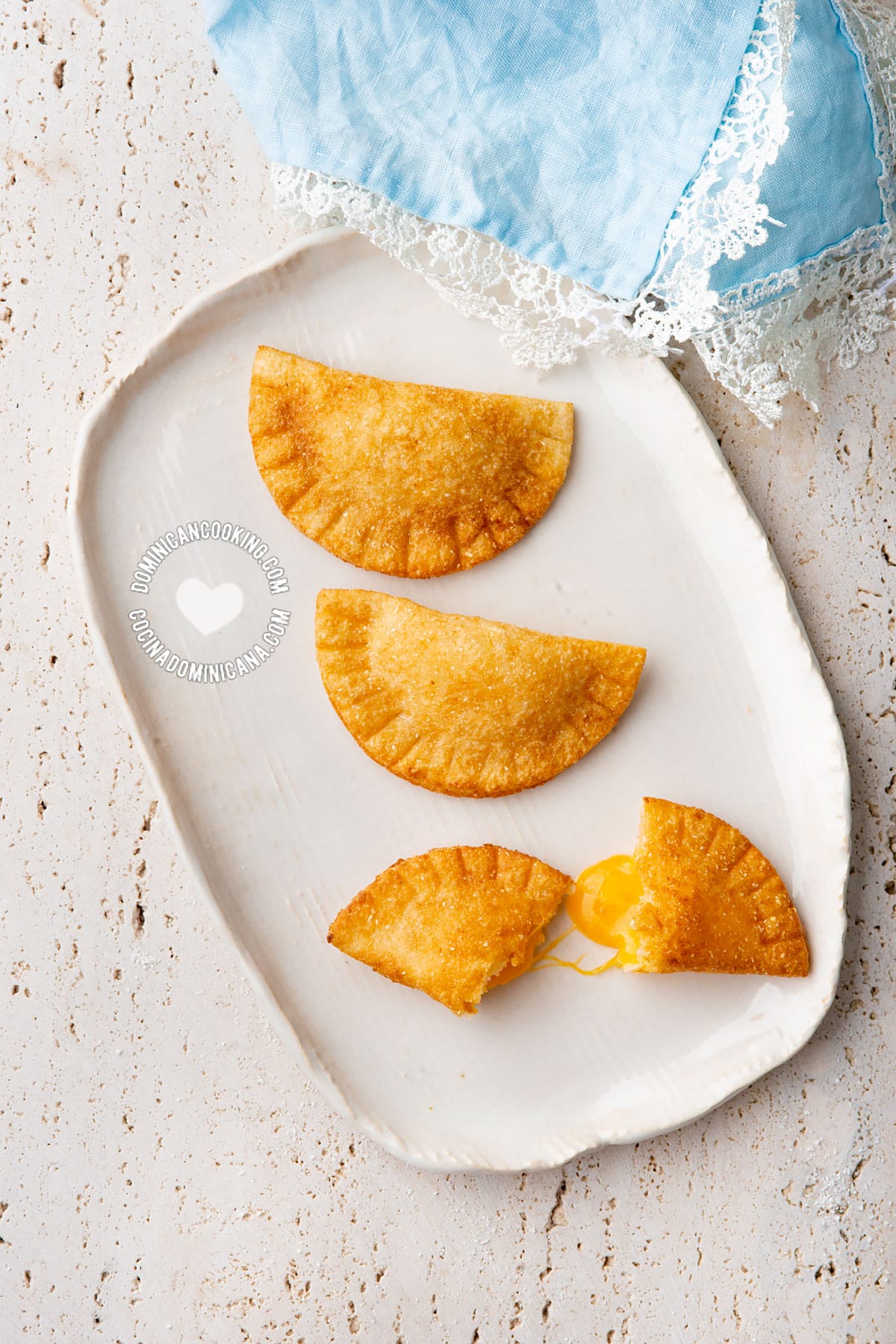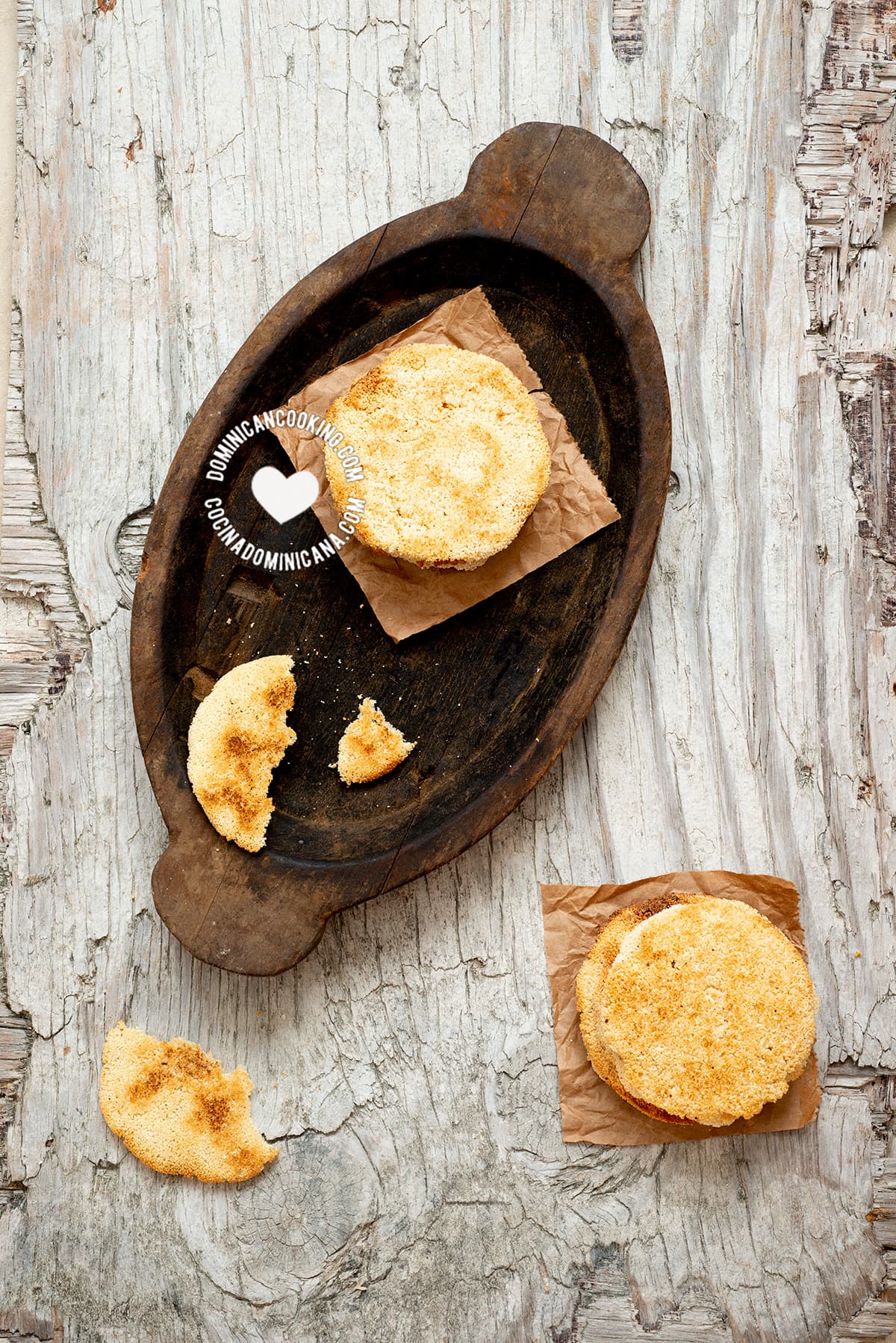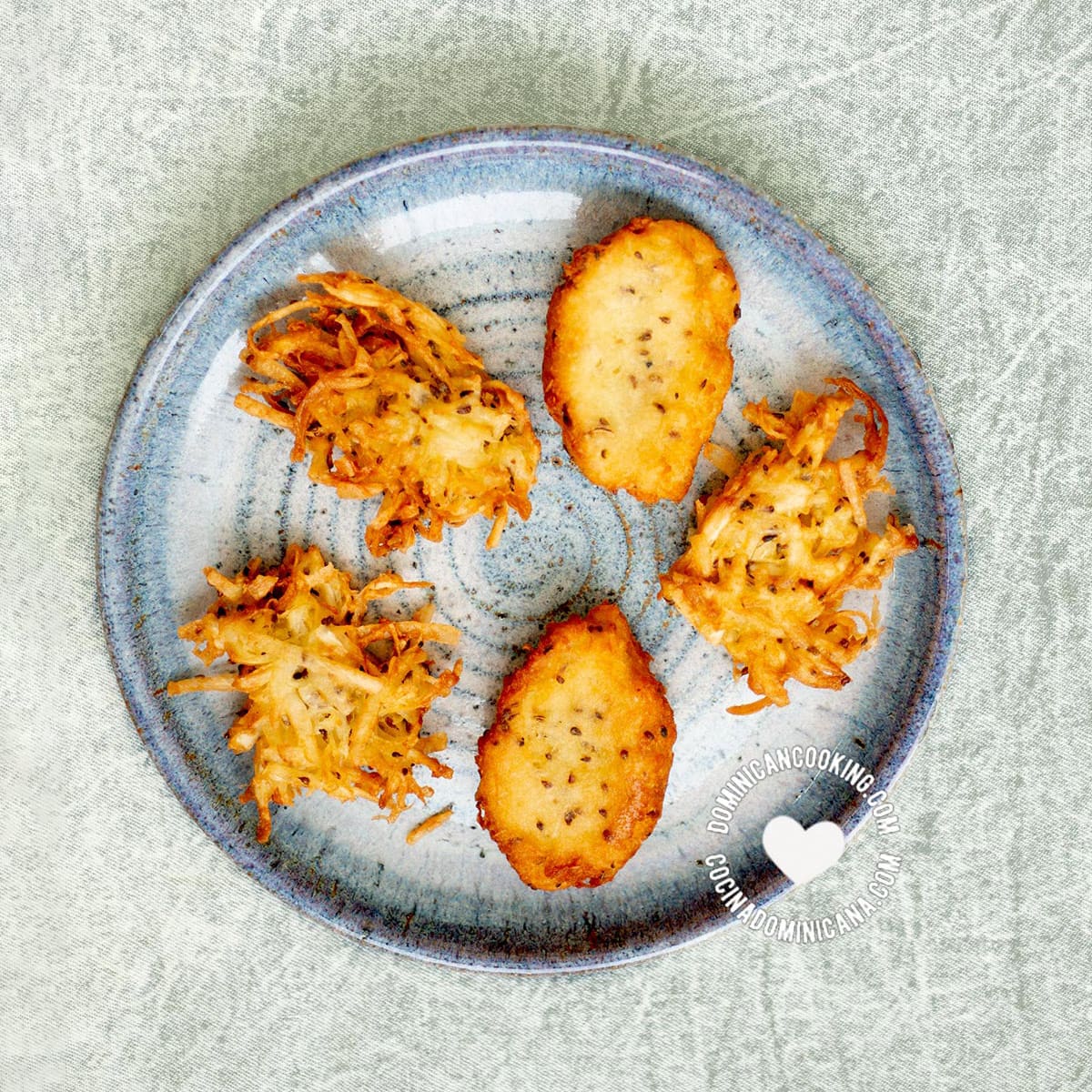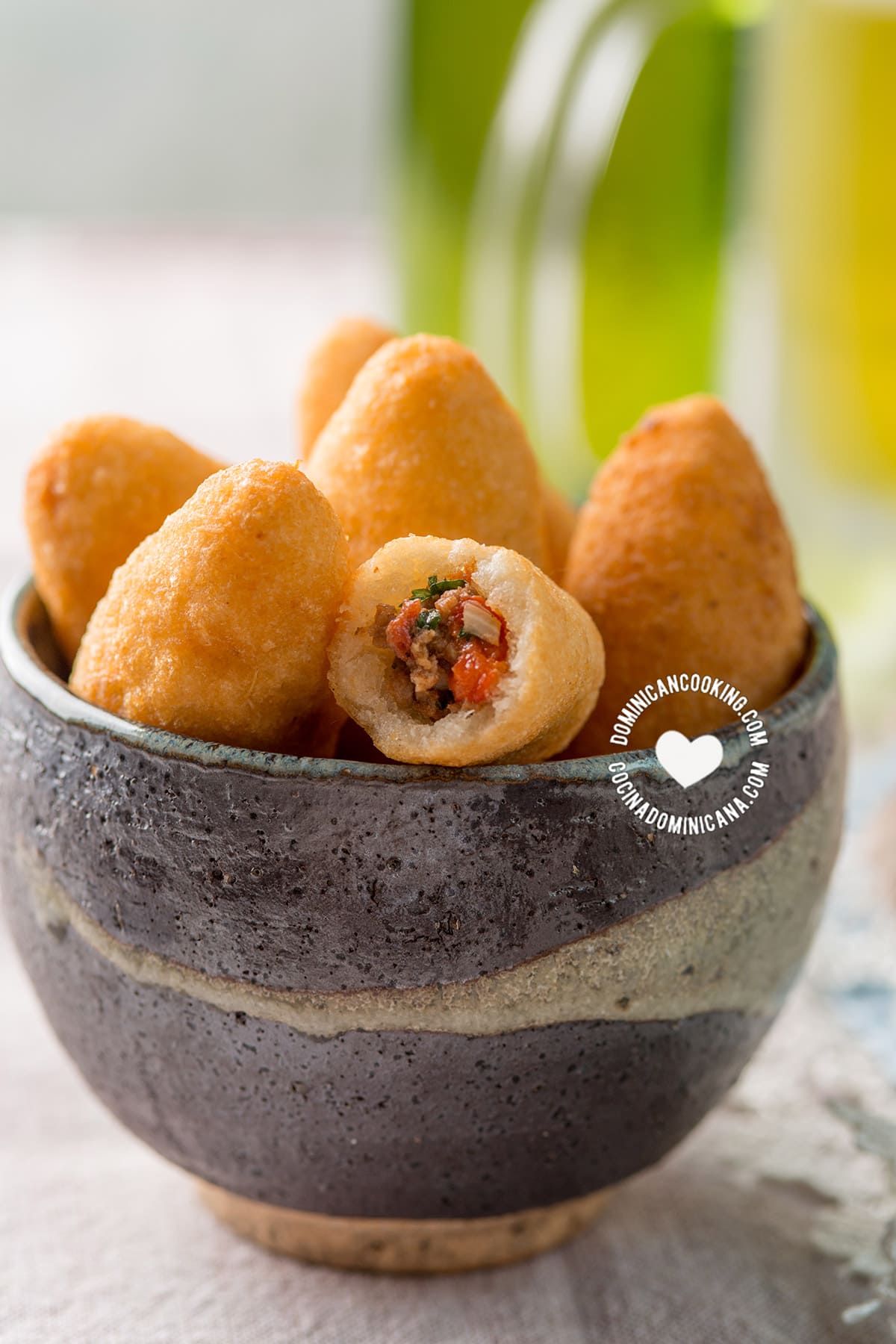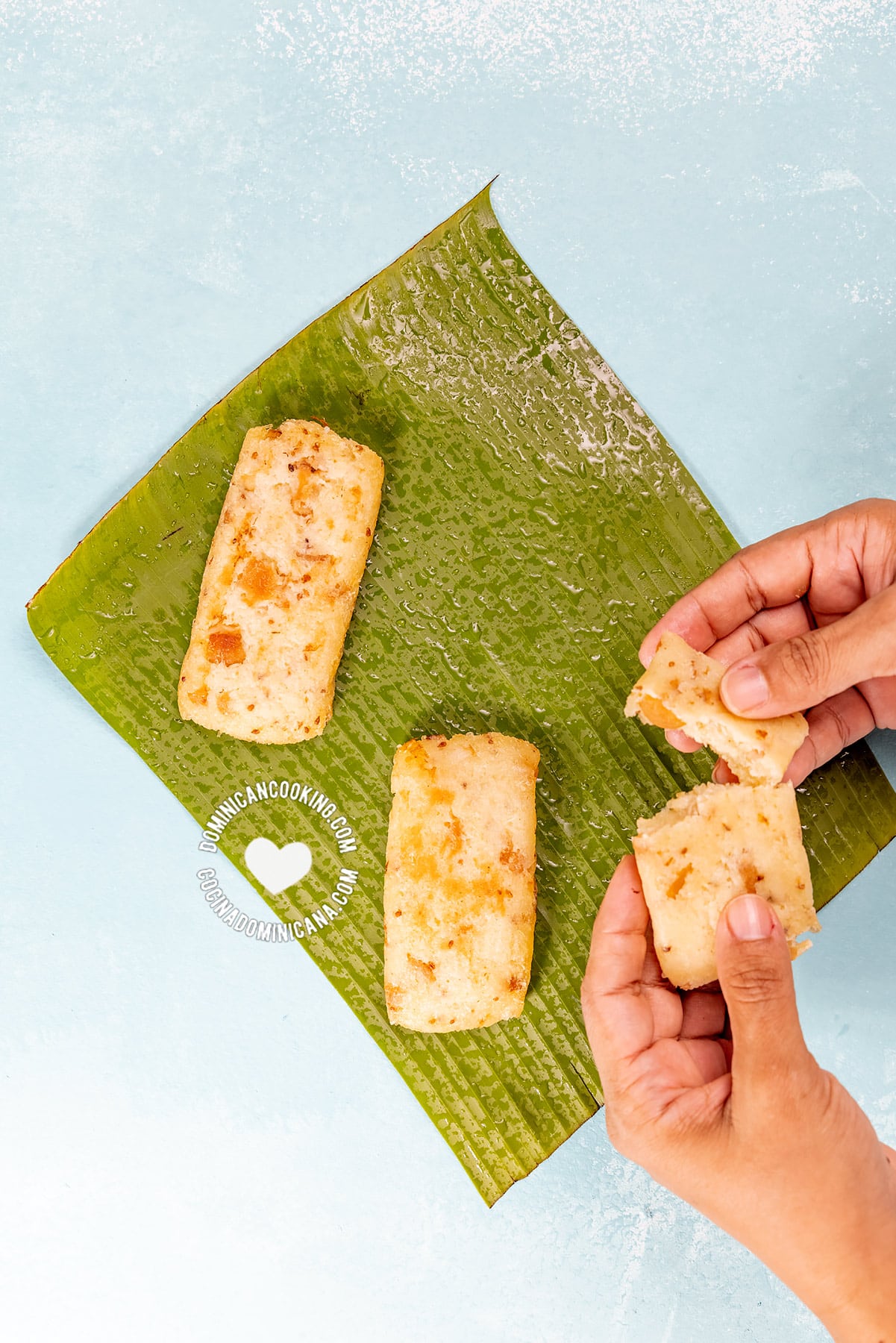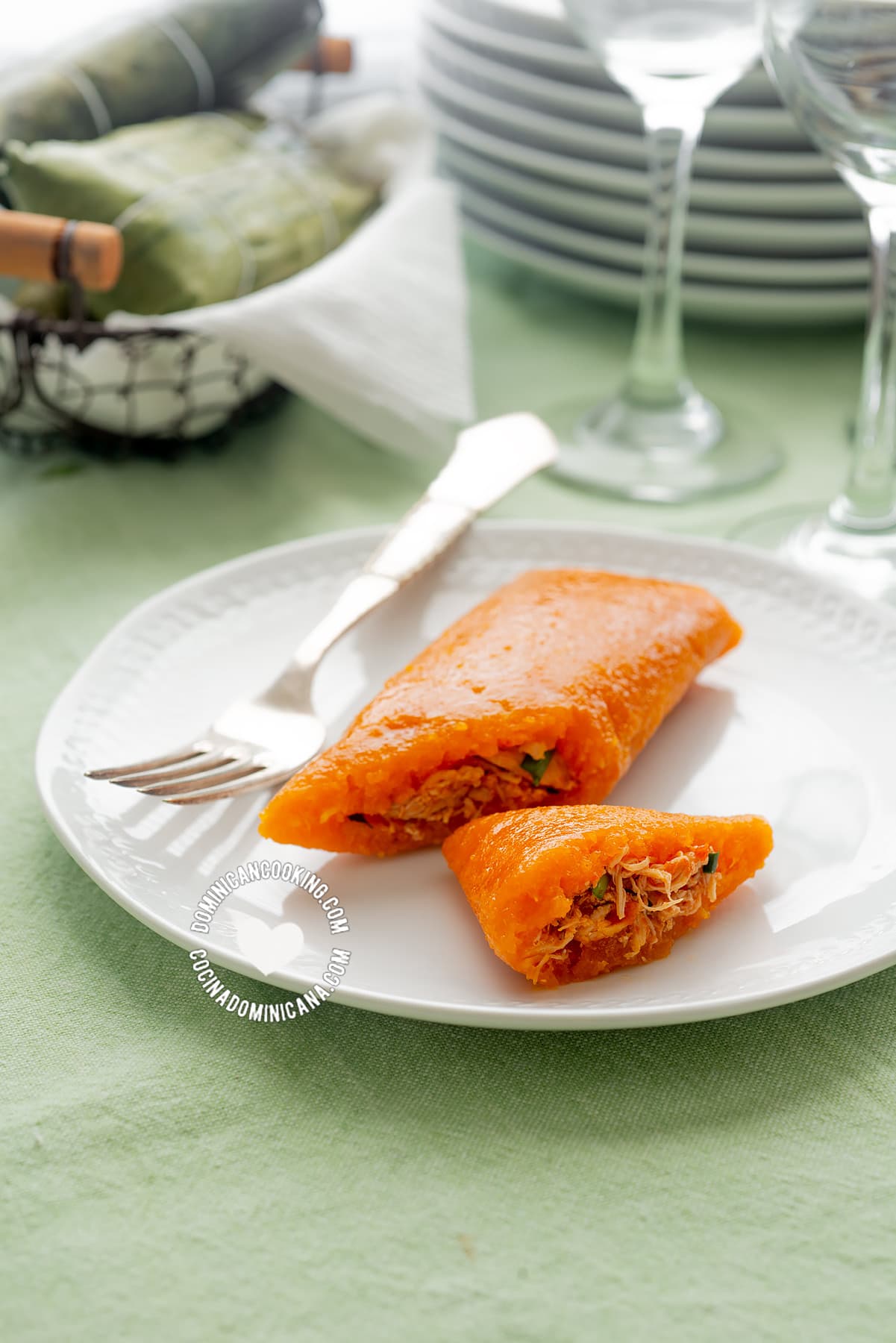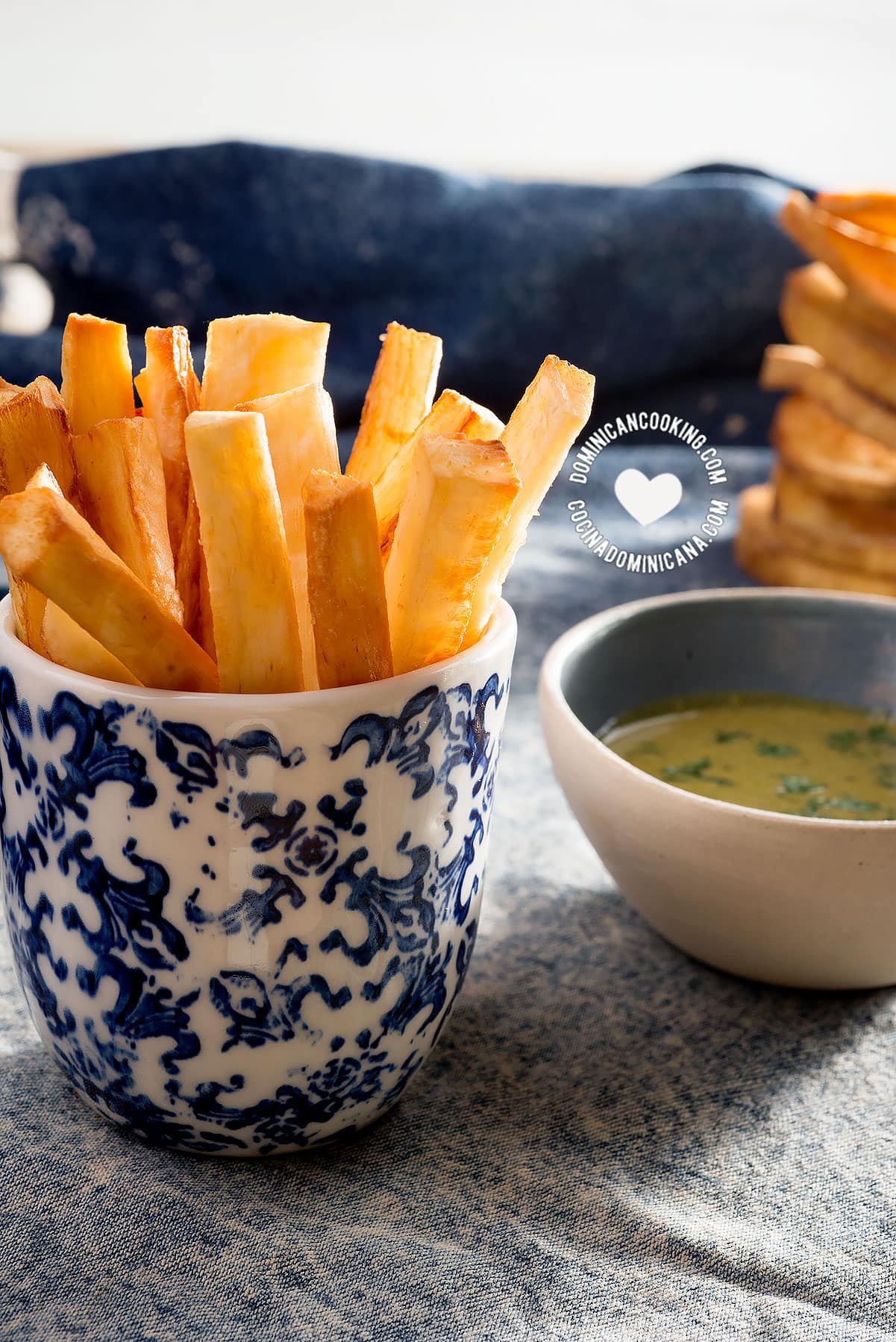If you want to learn how to cook yuca, you'll love all our yuca recipes and essential guide on the amazing cassava root. Yuca is one of our ancient foods, and consumed for many hundreds of years. Let me show you why we love it so much.
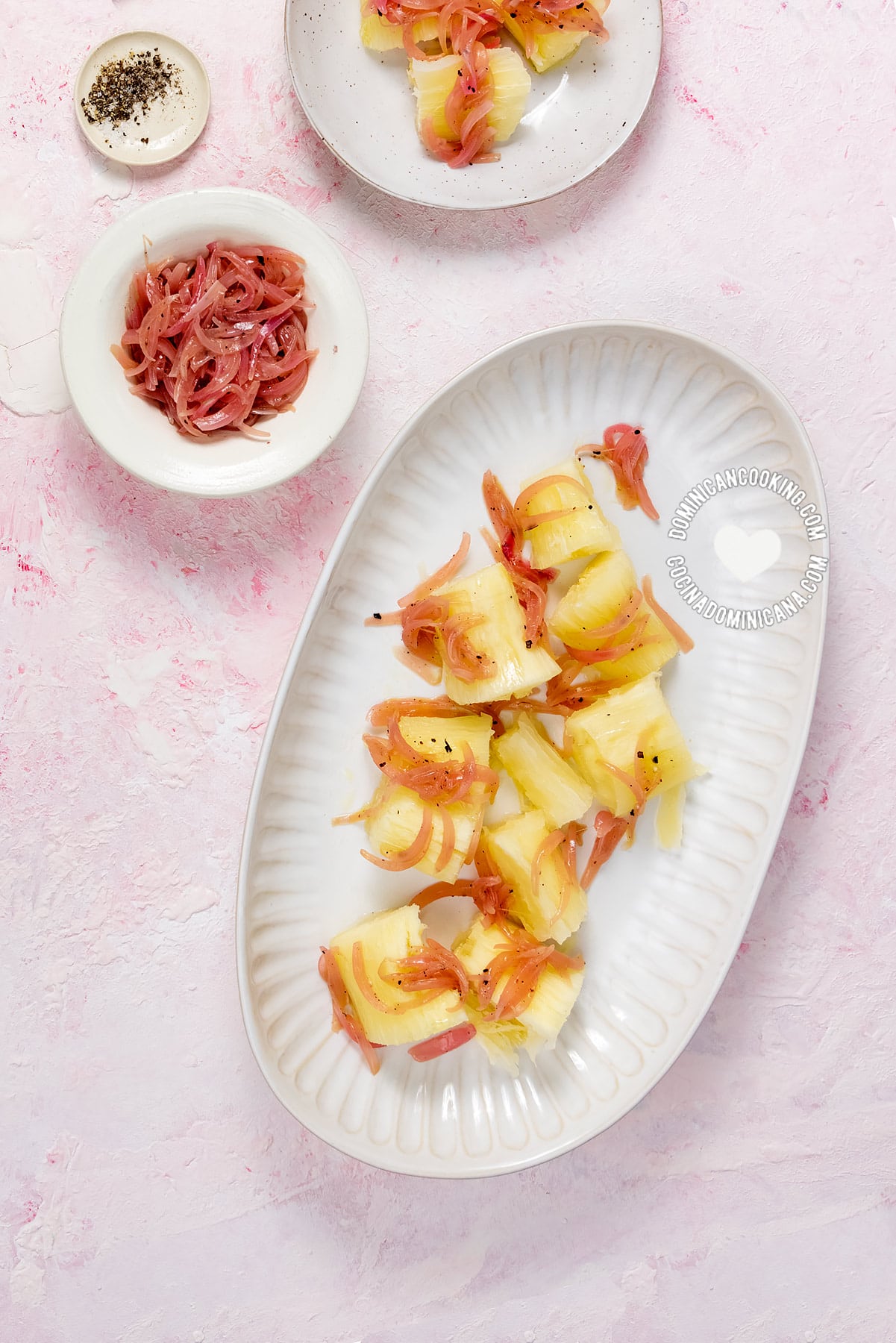
Why we ❤️ it
Yuca with it's tender texture and mild flavor lends itself to many ways to cook it. Yuca is more often than not cooked boiled as a side dish, but it is a very versatile root vegetable. We enjoy it in many ways: from our ever favorite yuca hervida, arepitas de yuca, and casabe - our ancestral bread.
Most popular yuca recipes
- Cativías (Tapioca Flour Empanadas)
- Casabe (Cassava Bread)
- Bollitos de Yuca (Cheese-Stuffed Fried Cassava Balls)
- Arañitas and Arepitas de Yuca (Dominican Yuca Fritters)
- Chulitos (Spicy Cassava Rolls)
- Panecicos de Yuca (Cassava and Pork Crackling Rolls)
- Pasteles de Yuca en Hoja (Cassava Pockets)
- Buñuelos de Yuca (Cassava 'Beignets' in Spiced Syrup)
- Pastelón de Yuca (Cassava and Chicken Casserole)
- Yuca Frita (Easy Cassava Fries)
- Mofongo de Yuca (Fried Yuca Mofongo)
- Boiled Yuca al Mojo de Ajo (with Garlic Sauce)
How to cook yuca
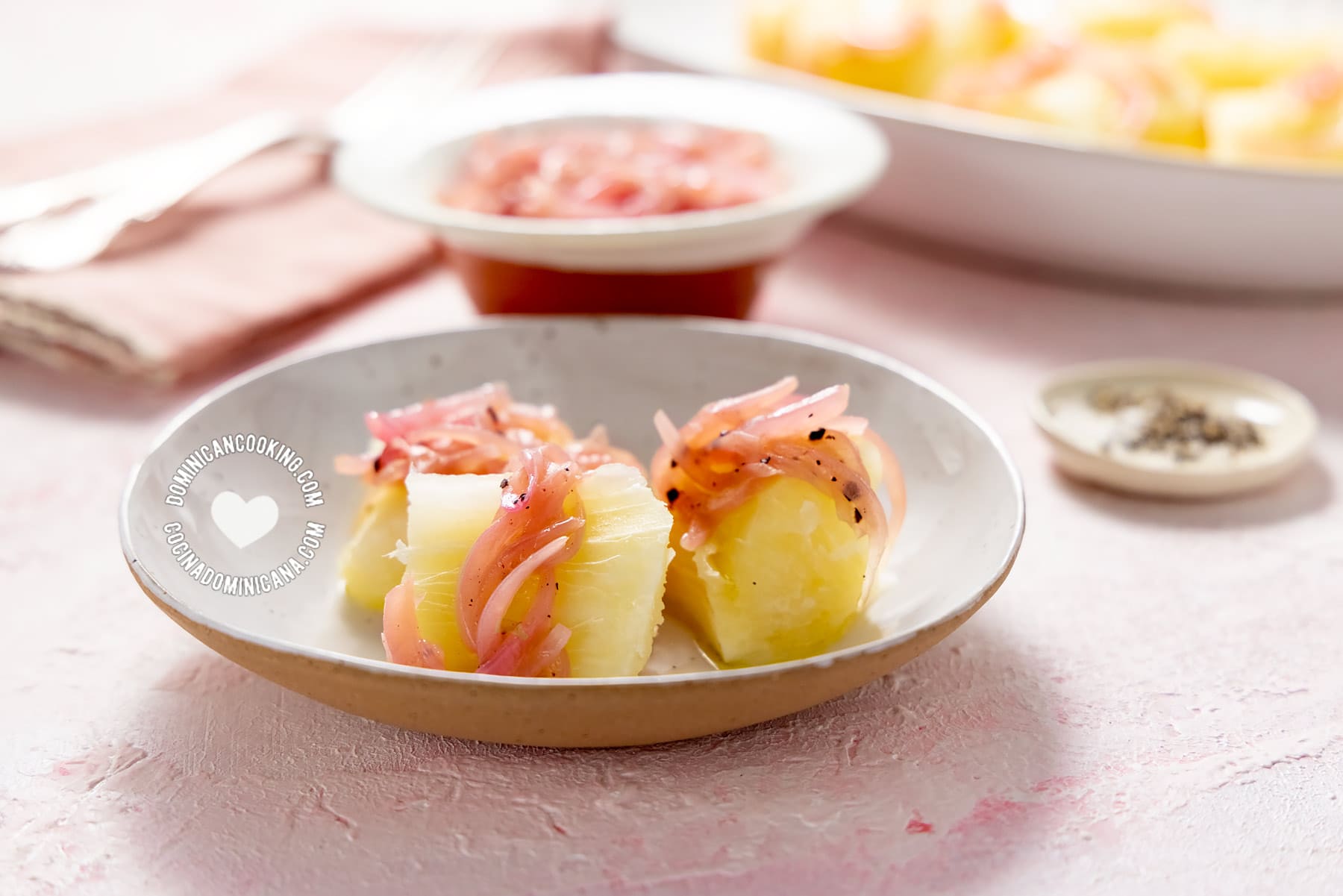
We boil it (yuca hervida with onion or with garlic sauce), fry it (yuca fries, or yuca mofongo), and bake it (pastelón de yuca) yuca dishes. We make bread, savory cakes, desserts, fries, fritters, tapioca dishes, and yuca flour dishes with it. It is also a common addition to soups and stews. You can see some of these below.
Yuca flour (which we call cativía) is used to make the namesake yuca empanadas that we love so much. We have a video you can use to make yuca flour at home.
What is yuca?
Yuca (cassava) is the starchy tuberous root of the cassava plant, the shrub Manihot esculenta. Cassava is a drought-tolerant plant, a thick tuber root with a thin brown skin, a thicker pink and white rind, and white flesh.
Yuca is a staple ingredient in Latin America, parts of Asia, and Africa.
What does yuca taste like?
When cooked, yuca has a mild, buttery taste, it has a soft creamy texture.
Picture of yuca
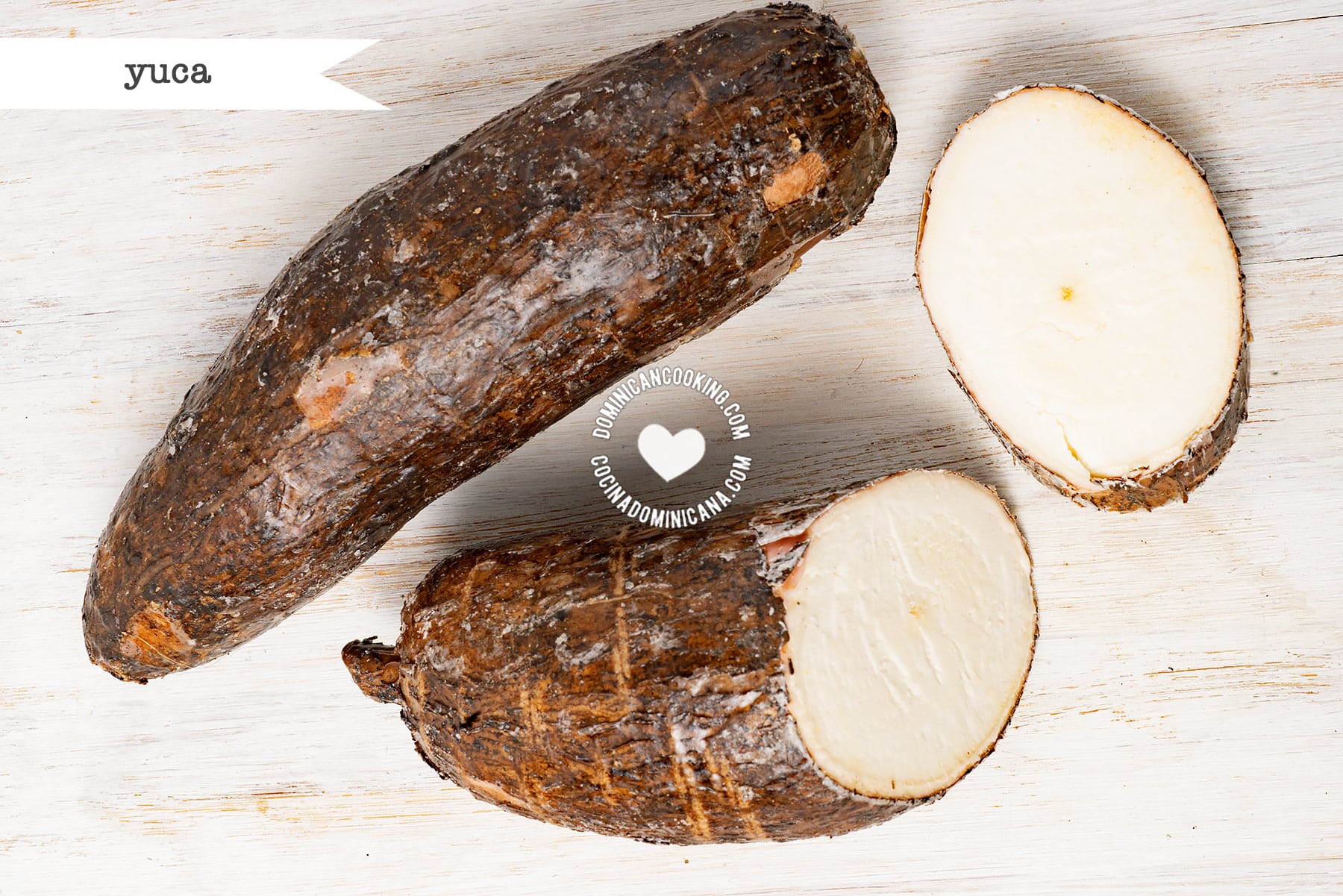
Names in English and Spanish
Cassava is also known as manioc, mandioca, or Brazilian arrowroot. It is nearly universally known in Spanish as yuca, though in some places, it is also known as mandioca.
Cassava vs yuca: Bear in mind that the name yucca in English is not the same as yuca. Yucca is an ornamental plant native to North American desert areas. The proper name for yuca roots in English is cassava.
History of yuca
Cassava is native to an area of South America centered in western Brazil and brought to Hispaniola and the Caribbean by the natives of this region, who were the first to populate the island of Hispaniola. Yuca was a staple of the Taino diet, and the only ingredient in casabe, a dish that we still eat. In our country, yuca is far more popular than potato and used for the same purpose.
Storage
Yuca is a relatively long-lasting root vegetable. A traditional method for storing is burying it unpeeled in well-drained but slightly moist soil (my mom had a large pot with soil just for that purpose). It keeps well refrigerated (unpeeled) for about a week, especially if it comes covered in wax, it then starts to dry.
If you want to keep it for longer, peel it, chop it and freeze it in a tight bag with the least air inside as possible. Frozen it can be kept for about a month before the taste starts to suffer.
Nutritional information
Starch-rich, yuca is rich in carbohydrates. Among its nutrition properties and health benefits, yuca is fat-free and rich in fiber. It is also a good source of Vitamin A, Vitamin C, beta-carotene, potassium, choline, phosphorus, and magnesium. 100 grams of yuca contain 1.4g of protein, 14 mg of sodium, 16 mg of calcium, and 159 calories. Yuca is also a favorite with celiacs as it is gluten-free.
Safety of yuca
This is one topic that comes up often when people hear about yuca. While the original (bitter) variety of yuca contained toxic substances, the variety that is currently grown and sold in the Dominican Republic (sweet) has been bred to eliminate this toxicity. Once cooked, it can be safely eaten without having to undergo the traditional processes used to get rid of the toxins. In any case, cassava should not be ingested raw.
How to peel yuca
Peeling yuca is very easy, but if you are not familiar with it, you can learn how to peel yuca with our video tutorial.
Video
FAQs
If you have any questions, please ask them in the comments.



